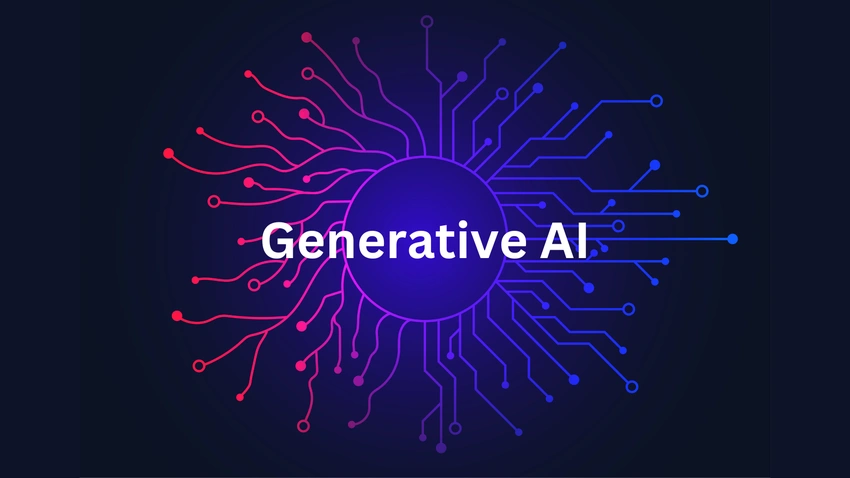The transformative prowess of Generative AI is propelling businesses into uncharted territories, offering a dual-edged sword of opportunities and challenges. In this exploration of the impact of generative AI on businesses, we’ll navigate through its dazzling innovations and confront the ethical and practical complexities that accompany this technological marvel.
The Radiant Facet: A Symphony of Efficiency and Creativity
1. Content Creation Mastery:
Picture a world where marketing copy, product descriptions, and blog posts materialize at a fraction of the usual time. This is the reality sculpted by generative AI tools such as Jasper and Copy.ai, automating content creation to liberate human resources for strategic endeavors. The outcome? Enhanced efficiency and the ability to personalize content at an unprecedented scale, engaging diverse audiences with surgical precision.
2. Design and Development Unleashed:
Generative AI isn’t just a content maestro; it’s a game-changer in design and development. Tools like DreamStudio and RunwayML empower designers and developers to explore myriad possibilities, accelerating innovation and transforming ideas into reality at an unprecedented pace. From mesmerizing product mockups to streamlined lines of code, generative AI is the engine behind the new age of creativity.
3. Tailored Customer Experiences:
Envision a virtual assistant that not only speaks your language but also comprehends your needs, tailoring product recommendations specifically for you. Generative AI, through chatbots like LaMDA and Bard, is actualizing this vision, creating hyper-personalized customer experiences that elevate engagement and foster unwavering loyalty.
The Shadowy Side: Ethical Puzzles and Operational Challenges
1. The Authenticity Quandary:
Can AI-generated content ever capture the essence of authenticity? The specter of plagiarism and misinformation looms, demanding businesses to grapple with the ethical ramifications of employing AI-powered tools. Tackling concerns about transparency and proper attribution becomes imperative in cultivating trust with consumers.
2. The Bias Conundrum:
AI algorithms are sponges for the data they ingest, and if that data is biased, the generated content mirrors those biases. This perpetuates harmful stereotypes and reinforces inequalities. Businesses are entrusted with the responsibility to meticulously address bias in their AI models, ensuring fairness and ethical outcomes.
3. Job Displacement Dilemma:
As AI automates tasks, concerns surface regarding job displacement and the evolving landscape of work. While new opportunities emerge, businesses must proactively navigate the potential negative impacts on their workforce and society at large, shaping a future that is both prosperous and equitable.
Real-world Illumination: Examples that Speak Volumes
- Fashion Forward with Generative Design:
A forward-thinking fashion brand leverages generative AI to birth a new clothing line, drawing inspiration from historical trends and customer preferences. The result? An expedited design process and an arsenal of innovative, customer-centric products. - Personalized Journeys in Travel:
A pioneering travel agency employs AI to personalize travel packages, considering each customer’s budget, interests, and travel history. The outcome? Elevated customer satisfaction and a surge in repeat business. - Social Media’s Biased Backlash:
A prominent social media platform faces public outcry as its AI-powered content moderation system is revealed to be biased against certain demographics. This underscores the significance of responsible AI development and the indispensable need for human oversight.
The Forward March: Navigating the Future with Responsible AI
Generative AI stands as a potent tool, demanding a judicious and forward-thinking approach. Businesses must acknowledge both the boundless potential and the inherent challenges of this technology. Through the adoption of a responsible AI strategy that champions ethics, transparency, and human oversight, businesses can harness the full potential of generative AI to drive innovation, enhance efficiency, and cultivate enduring success.
The key to the future lies in striking a delicate balance between transformative potential and ethical considerations. By fostering open dialogue, collaborating with policymakers, and prioritizing responsible AI development, businesses can steer generative AI towards becoming a force for good, shaping a future that is both prosperous and equitable.




